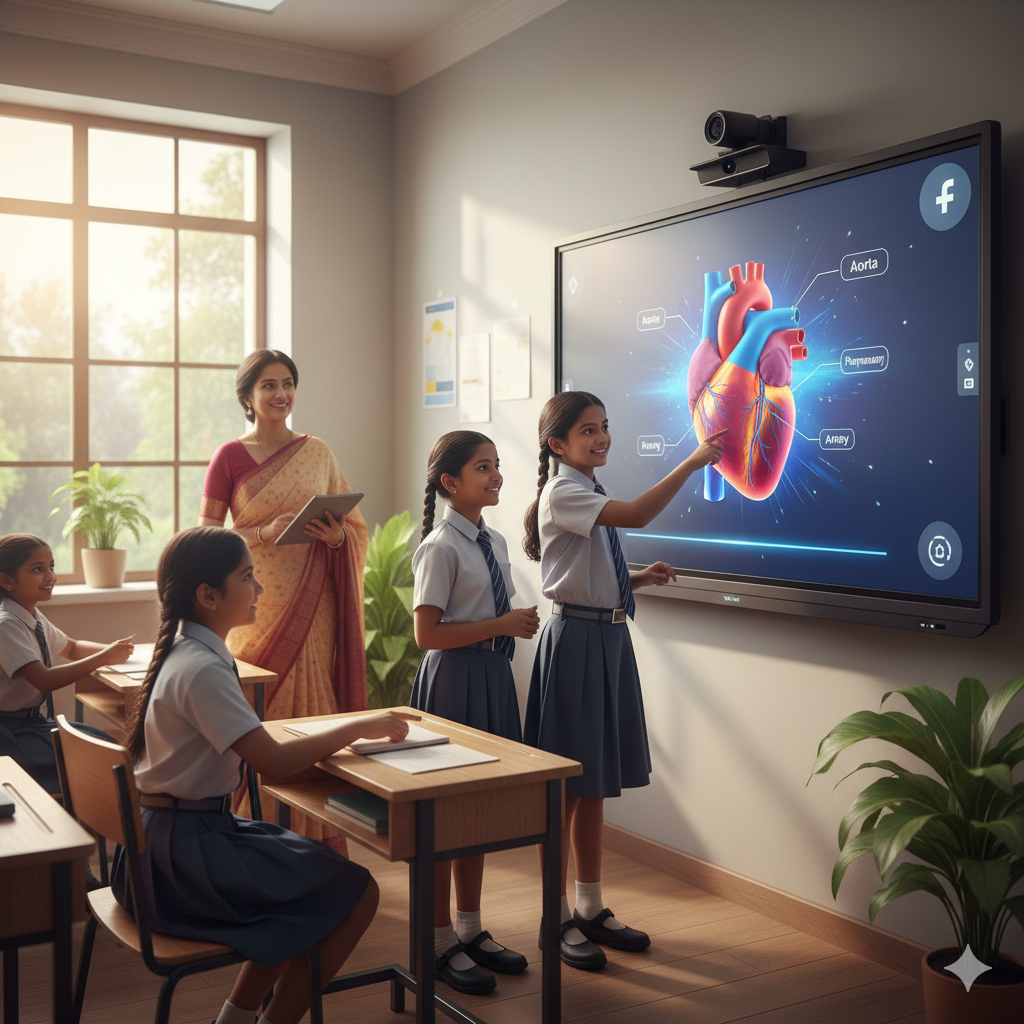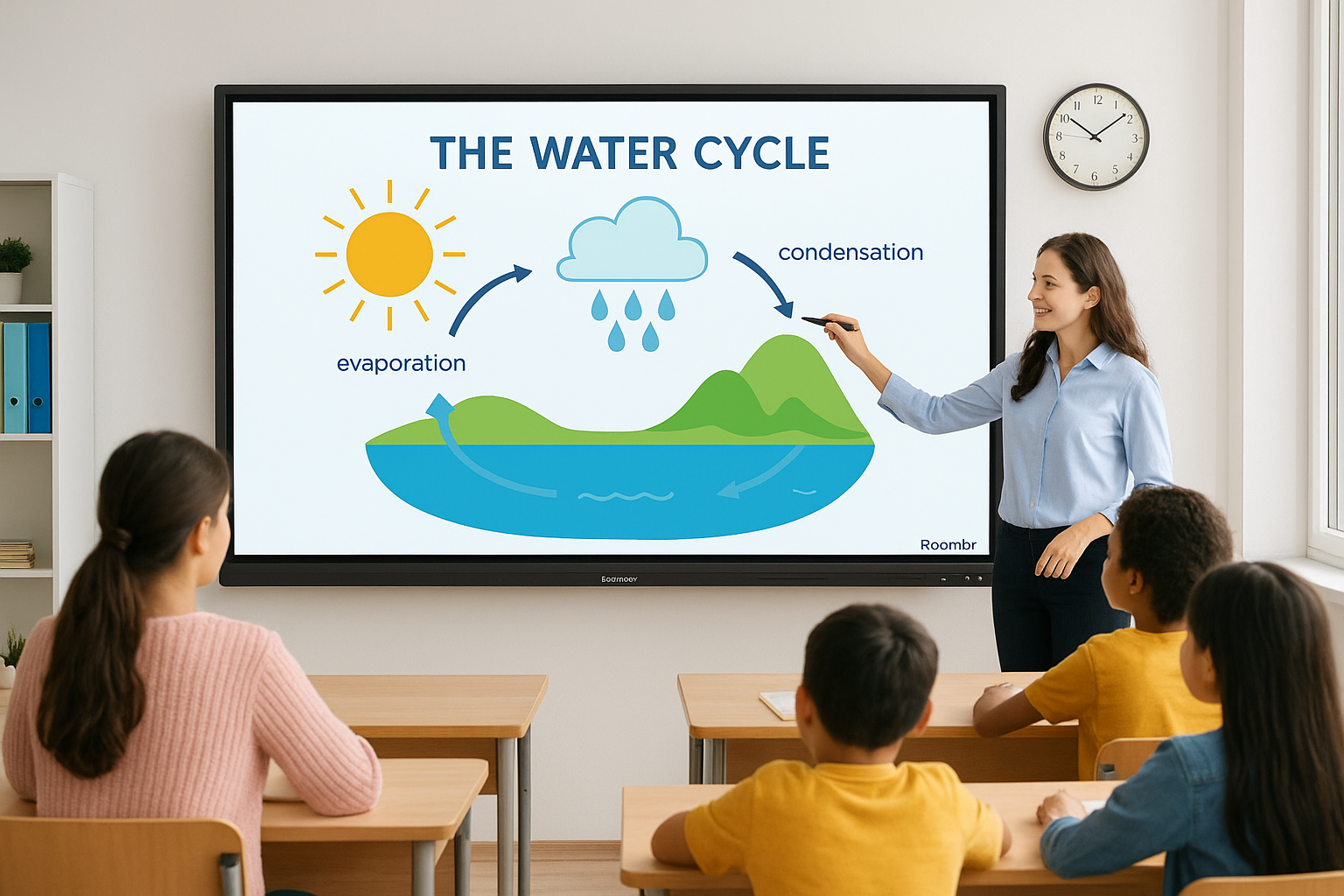How Digital Classrooms Can Help Rural Schools in India
.png)
India’s rural education system has faced long-standing challenges—limited resources, a shortage of trained teachers, and a lack of infrastructure. These obstacles have often created a chasm between the quality of education in urban and rural areas, leaving countless students with little hope of achieving their academic dreams. However, the advent of digital classrooms is transforming this narrative.
With the integration of technology, learning is no longer confined to the four walls of a traditional classroom. Students in villages are now accessing a wealth of knowledge and resources at their fingertips. Interactive lessons, online courses, and virtual classrooms are bridging the gap, allowing young minds to explore subjects that were once out of reach.
The presence of digital classrooms fosters creativity and engagement. Students can delve into multimedia projects, participate in virtual field trips, and utilize educational apps that turn learning into an adventure. This shift not only ignites a passion for learning but also equips students with essential skills for the 21st century, such as digital literacy and critical thinking.
Why Digital Classrooms are Vital for Rural Areas?
1. Access to Quality Content
Students in rural schools often lack access to updated textbooks and expert teachers. Digital classrooms provide curated content, including videos, animations, and interactive quizzes that simplify learning.
The beauty of a smart classroom is that students don’t have to depend on outdated material or irregular supply of books. It can bring the latest NCERT curriculum, recorded expert lectures, and interactive simulations to even the remotest village.
In practice, this means a student in a rural school in one state could access the same interactive biology experiment that a student in an urban school in another state of India is exploring. The consistency of quality is the real value.
2. Teacher Empowermente
Teachers in rural areas may not have access to advanced training. Smart classroom solutions offer user-friendly tools and training programs that enhance teaching methodologies.
Beyond training, a digital classroom empowers teachers to save time and effort. Instead of spending hours drawing diagrams on blackboards, they can use a smart board to display animated concepts instantly. This allows teachers to focus on explaining and engaging with students rather than just delivering rote notes.
Moreover, online teacher training modules and virtual peer-learning networks ensure that teachers in rural areas don’t feel isolated. They can continuously upgrade their skills while using smart classroom equipment, ensuring teaching standards improve over time.
3. Student Engagement

Source: Freepik
Traditional blackboard teaching can feel monotonous. Digital tools like smart boards for classrooms create an immersive experience, keeping students focused and motivated to learn.
Students today are already exposed to mobile phones and digital media. A digital classroom taps into that familiarity, turning passive listening into interactive learning. Quizzes, polls, and gamified lessons help students stay alert and motivated.
For example, instead of simply reading a geography lesson, students can explore interactive maps, zoom into different states, and even watch short videos about climate or agriculture. This hands-on style of learning is particularly powerful for rural students, who may find traditional teaching uninspiring.
Key Smart Classroom Equipment for Rural Schools
1. Digital Boards for Classrooms
These interactive boards allow teachers to explain topics using multimedia resources like videos, images, and diagrams. A smart board is especially useful in schools with large classrooms, where visuals help all students understand better.
2. Smart Class Apps for Students
Apps provide additional learning materials, enabling students to continue their education outside school hours. Many apps now work offline or in low-internet zones, making them ideal for rural contexts.
3. Smart Classroom Software
Comprehensive solutions help manage attendance, grades, and lesson planning efficiently. When integrated with a digital classroom, such software reduces teacher workload while providing transparent tracking of student progress.
States like Kerala and Karnataka have already implemented digital classrooms in government schools, showcasing improved student outcomes and teacher satisfaction. These examples highlight the transformative power of technology in education.
FAQs on Digital Classrooms in Rural India
1. What is a digital classroom in rural schools?
A digital classroom uses technology like smart boards, projectors, and educational software to deliver lessons interactively. It helps rural schools overcome teacher shortages and outdated resources.
2. Can digital classrooms work without high-speed internet?
Yes. Many smart classroom solutions such as Roombr Digital Classroom are designed for low-bandwidth areas. Teachers can save lessons in advance and use offline features so students don’t miss out on learning, even when the internet connection is poor.
3. How much does a smart classroom cost for rural schools in India?
The cost typically ranges from around ₹50,000 to ₹2,00,000 per unit. Projector-based systems and software solutions can start at lower price points, while advanced smart boards and devices cost more. Roombr’s digital classroom is designed to be affordable and scalable for rural schools.
4. How do teachers in villages adapt to digital classrooms?
Smart classroom equipment comes with training and easy-to-use interfaces. Teachers often find it more efficient than traditional methods, as it reduces repetitive tasks and helps them engage students more effectively.
Conclusion
Digital classrooms have the potential to level the playing field, ensuring that students in rural India receive the same quality of education as their urban counterparts. They not only bridge gaps in access to resources but also build confidence, curiosity, and future-ready skills among students. With the right tools in place, rural schools can transform into centers of interactive learning where both teachers and students thrive.
To learn how Roombr digital classroom solutions can make this vision a reality, explore our offerings today.
Aneesh Kumar
Share
Step Into the future of
Education with Roombr


















